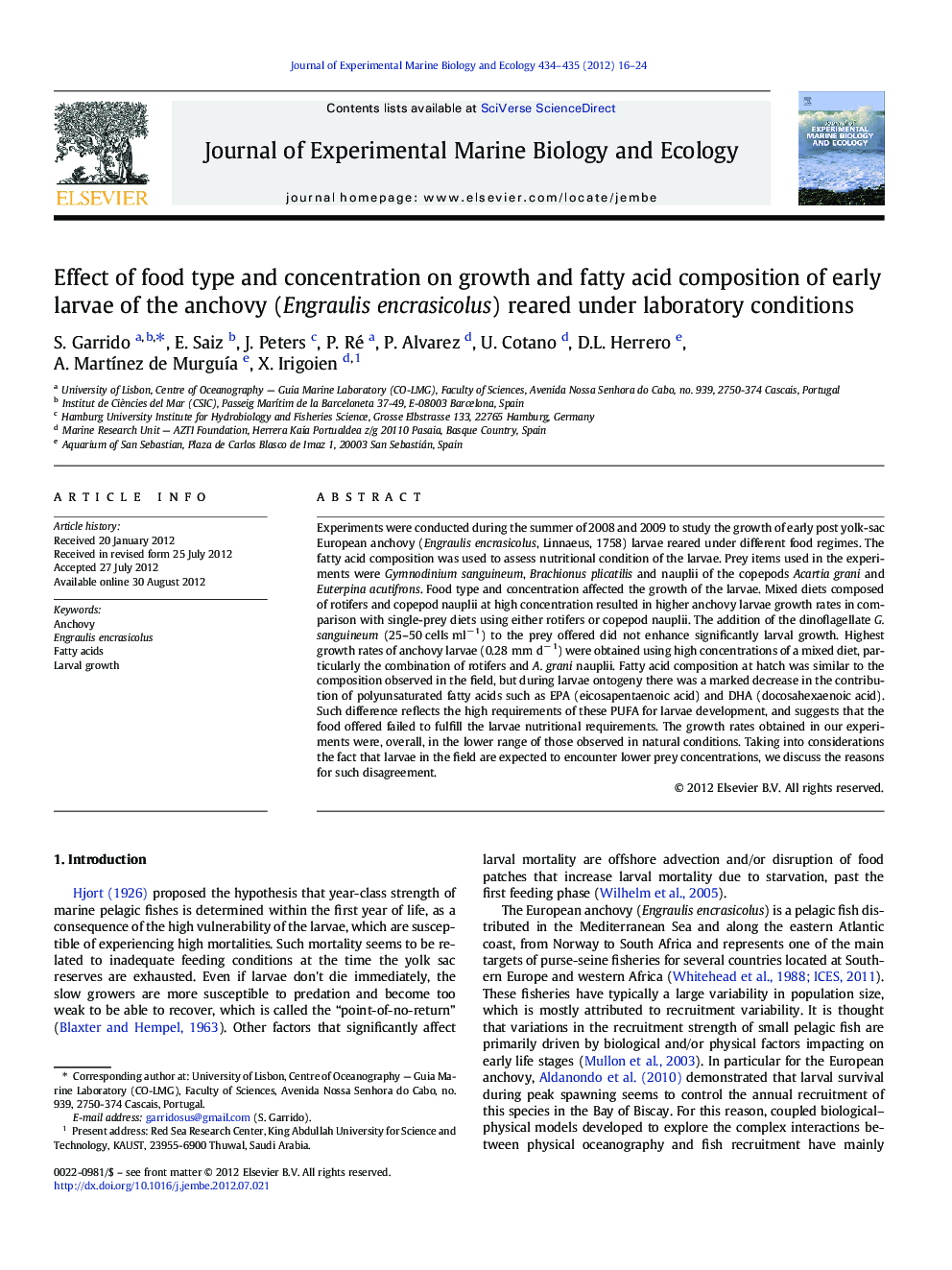| Article ID | Journal | Published Year | Pages | File Type |
|---|---|---|---|---|
| 4395925 | Journal of Experimental Marine Biology and Ecology | 2012 | 9 Pages |
Experiments were conducted during the summer of 2008 and 2009 to study the growth of early post yolk-sac European anchovy (Engraulis encrasicolus, Linnaeus, 1758) larvae reared under different food regimes. The fatty acid composition was used to assess nutritional condition of the larvae. Prey items used in the experiments were Gymnodinium sanguineum, Brachionus plicatilis and nauplii of the copepods Acartia grani and Euterpina acutifrons. Food type and concentration affected the growth of the larvae. Mixed diets composed of rotifers and copepod nauplii at high concentration resulted in higher anchovy larvae growth rates in comparison with single-prey diets using either rotifers or copepod nauplii. The addition of the dinoflagellate G. sanguineum (25–50 cells ml− 1) to the prey offered did not enhance significantly larval growth. Highest growth rates of anchovy larvae (0.28 mm d− 1) were obtained using high concentrations of a mixed diet, particularly the combination of rotifers and A. grani nauplii. Fatty acid composition at hatch was similar to the composition observed in the field, but during larvae ontogeny there was a marked decrease in the contribution of polyunsaturated fatty acids such as EPA (eicosapentaenoic acid) and DHA (docosahexaenoic acid). Such difference reflects the high requirements of these PUFA for larvae development, and suggests that the food offered failed to fulfill the larvae nutritional requirements. The growth rates obtained in our experiments were, overall, in the lower range of those observed in natural conditions. Taking into considerations the fact that larvae in the field are expected to encounter lower prey concentrations, we discuss the reasons for such disagreement.
► Experiments studied growth and nutritional condition of lab-reared anchovy larvae. ► Diverse prey were used to grow early larvae, such as dinoflagellates and copepods. ► Highest growth rates occurred with high densities of rotifers and Acartia nauplii. ► During larvae ontogeny there was a decrease of polyunsaturated fatty acids. ► Laboratory growth rates were in the lower range of those in the wild.
